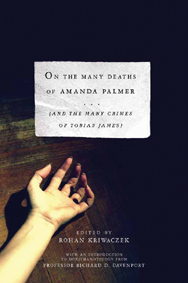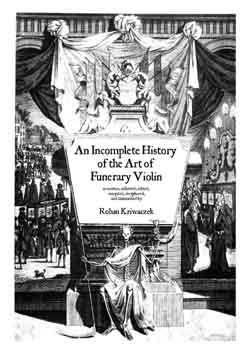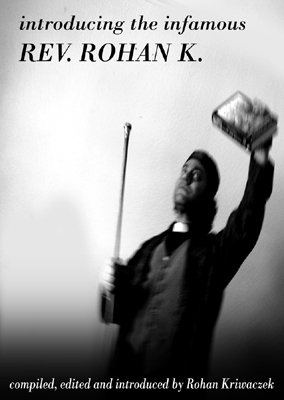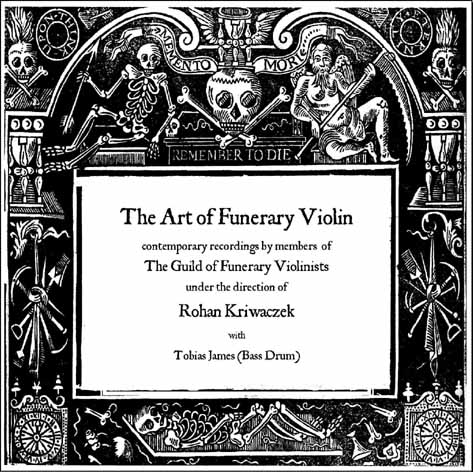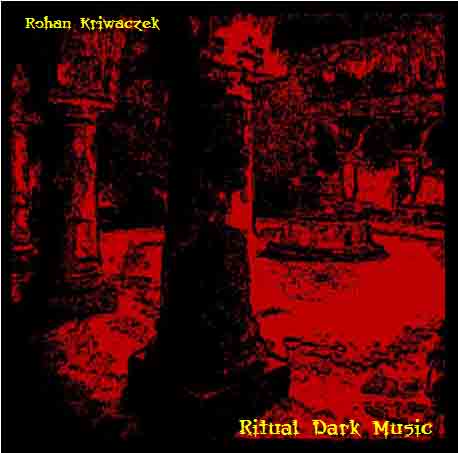to download this article as a free ebook click here
The Life and Works of Francis Featherstone 1860-1896
It is widely accepted that history is written by the victors, and though that statement is usually applied to the grand sweep of historic events it is also true of the evolution of ideas and the influence of Art and artists upon our culture. For example the musical form of the Nocturne immediately conjures in the mind of any musically literate person the name of Frédéric Chopin, and yet the form was devised and taken to its full romantic fruition by the Irish composer John Field. That Chopin was a true genius of self publicity, who managed to develop an international reputation as the greatest of piano virtuosi whilst only giving two public concerts in his entire 19 years residence in Western Europe, enabled him to seize the form and make it his own so intimately that the name of John Field has been almost entirely forgotten, despite his unquestionably profound influence upon the evolution of Romantic Classical music. The same could be said of Voříšek, creator of the piano Impromptu, whose works under that title bear a striking resemblance to those better-known later pieces of the same title by Schubert. (Though Schubert himself was not a great self-publicist, his works were taken up and trumpeted by Mendelssohn and Schumann both of whom knew all too well how to manipulate public artistic opinion). And yet rarely, if ever, has an artist of such profound influence and importance been so thoroughly forgotten as the poet Frances Featherstone, whose works were to inspire many of the greatest poets of the early twentieth century, and whose Cathartist aesthetic is still very present throughout much of popular culture today: Slasher films and shoot’em-up thrillers, pulp fiction novels, even heavy metal music - all owe a huge debt to the works and aesthetic created by Featherstone.
On 27th January 1897 Frances Featherstone, poet, degenerate, and founder of the Decadent Symbolist movement known as The Devonshire Cathartists, was discovered by a shepherd, crucified to a tree in Wistman’s Wood on Dartmoor. Although initially treated as an attempted murder, as reported in the Totnes Times of January 30th, Inspector Benatt of the Devonshire constabulary finally concluded that it was an unfortunate “accident” and all charges pending against Rebus Kraven, Featherstone’s colleague, friend and lover who had disappeared a month earlier, were dropped. Featherstone himself survived the incident, but only for 6 weeks, during which time he swung in and out of a feverish delirium, nursed by his wife Emily, and it was during these weeks that he wrote what is now considered to be his most important work – “Visions After a Crucifixion”.
The discovery of Featherstone’s missing journals in 2001 shed much new light on the matter, most specifically that it was an attempted suicide performed
“…in a manner well suited to my most earnest need for sexual contrition… I shall feel as He [Jesus] felt as he gazed down upon a corrupted world… and with my final words I shall most vehemently curse him who placed me there.”
To fully understand what led to this most unusual of suicide attempts, and the “Visions” that were to follow we must look back at Featherstone’s relationship with both Christianity and sexuality, two themes which were to dominate both his writing and his life, and which were to come together in one cataclysmic moment after his father’s death in 1882.
Frances Alexander Featherstone was born in Moretonhampstead, Devon, on December 16th 1860, to a once wealthy family (his great great grandfather had made a small fortune importing Italian marble) He was initially brought up by his father, who was a Methodist priest, and his older sister, Mary, as his mother had died when he was 2 years old. At the age of 10 he was sent to board at West Buckland School, on the edge of Exmoor, where he excelled in Literature, Greek and Latin, but demonstrated a “distinct lack of discipline”, and in particular an “irreverence not only towards his tutors but also, and more disturbingly, towards God himself” as stated in a letter from Albert Ward, the headmaster, to his father, dated 12th March 1872. These early conflicts in his relationship to God were to haunt Featherstone his entire life, but it was not until the death of his father that the focus turned from God himself to those who preach his word. By all accounts Featherstone’s father was a particularly strict patriarch and keen to uphold his beliefs through the frequent use of corporal punishment. Featherstone recounts in his journals many such examples of “beatings to inspire in me a love of God and His Word” and it is therefore perhaps unsurprising that he was to associate God with punishment thereafter. However, his father’s death was to reveal another darker side to the man, in the form of a hand written manuscript hidden amongst his father’s prayer books, entitled “The Secret Life of a Country Clergyman” and containing
“the most abhorrent catalogue of sexual debauchery and perversion ever committed to paper by an Englishman. I have no idea whether these words be true, as presented, or the workings of a most diabolic imagination, nor do I care to know. What is certain, however, is that his priestly vestments were, it seems, no more than a shallow veneer presented to disguise the insidious corruption that lay within. And oh, my poor dear sister, whom I fear suffered so often at his hands, though she will not speak of it. Had I but known…”.
This discovery was to have a most profound effect on Featherstone, initially resulting in what would today be called a nervous breakdown, but ultimately unlocking a determination to
“…reveal such hypocrisies where’er they may be found… to search within and dig out every dark thing … to show the human soul in all of its various indignities… to BE a poet, and leave the writing of empty words to others… I shall become the Arch-Cathartist, seer into souls, judge jury and expressionist… I shall cut the heart of blackness from its poesied lair, and place it on display for all to see, for only there, in the darkness, shineth the light…”
Certainly aspirations such as these are not unique amongst poets, but rarely have they borne such rewarding fruit. In the 5 years following this discovery he was to write a series of volumes that would change the very nature of English poetry, and literary censorship, well into the 20th century, and inspire not only his fellow Cathartists, but also later poets of the calibre of WB Yeats and TS Eliot.
Another major influence upon that series of events which were to result is his self-crucifixion was his relationship with Rebus Kraven. He had married Emily Watson, daughter of a Camden Town watchmaker, in 1882, but following his father’s death, and his subsequent reinvention of himself as “Poet and Cathartist”, he was to develop a passionate love for Rebus Kraven, the young enfant terrible of the Brighton set of Decadent artists, a love whose intensity and sensuality is clearly demonstrated in the later great love poems, now widely considered to be amongst the very best examples of the form in the English language. The three lived together in an uncomfortable ménage-a-tois for the following five years, until one month before the crucifixion when Kraven disappeared (he was not to “reappear” until September 1913 when he arrived back in Moretonhampstead missing 3 fingers from his left hand, and bearing an “extraordinarily large goitre on which he had drawn a face and frequently attempted to bring into conversations, addressing it as “my learned friend”, more than likely as a further demonstration of his much chronicled desire to “confound and disturb those whose minds have long since closed to the cruel and undefinable truth of existence”). It is clear from a number of letters written by Emily, that she and Rebus had no great love for one another, indeed it seems that most of the “furious rows” in that volatile household were deliberately provoked by Rebus. Featherstone’s own disarmingly honest journals from the period reveal a conflicted man, torn between passions and guilt, trapped by the aesthetic of the artistic movement he was creating, and, despite his new role as arch-cathartist, still nonetheless troubled by his declining relationship with a Christian God. Most of all he was profoundly disturbed by his feelings for Rebus, and particularly his physical desires, which he would either revel in, or be repulsed by, often from sentence to sentence. And these various emotional conflicts continually lie beneath the surface of the “Visions After a Crucifixion”, informing its many arguments.
One last essential piece in the puzzle of events that ultimately led to his self-crucifixion was the recent social ostracisation he and his associates had suffered as a result of the publication of “The Cathartist”, a quarterly socio-literary magazine. This magazine only ran to 2 editions, but in its short life managed to offend most of the social and artistic establishment. The second edition famously included Rebus Kraven’s poem “On the Consummation of the Churches” in which he depicts Queen Victoria fantasizing in a most indecent manner about Pope Leo XIII. As a result the entire print-run was seized, and the Cathartists made a life-long enemy of Harding Gifford, among whose various titles were the 1st Earl of Halsbury, Lord Chancellor, President of the Royal Society of Literature, Grand Warden of English Freemasons, Fellow of the Zacharias Club and High Steward of the University of Oxford. A powerful enemy indeed, it was largely through the efforts of Earl Halsbury and the Zacharias Club that the Cathartists were first undermined, and then excluded from literary history. By all accounts Featherstone himself was only mildly troubled by this, seeing the wholesale condemnation of Cathartism as a “paradoxical victory of aesthetics over sentiment”, yet it seems certain to have had some impact upon his increasingly pessimistic world view as expressed by the “Visions”.
In the “Visions After a Crucifixion” Featherstone is debating man’s, and therefore his own, relationship with God, war, love, balance truth and beauty (the list could go on). The whole is presented as a series of visions, and, according to both Featherstone’s journal and Emily’s own account of the writing process, is based literally on the dreams he had during his last illness. The original manuscript (now in the hands of a private collector who generously allowed the author to examine it first hand) is written out by his wife Emily, due to the injuries sustained by his wrists during his crucifixion, however many notes and comments in his own somewhat precarious damaged hand do exist in his journal.
In a letter to her sister Emily describes something of the manner in which the “Visions” were written:
"…Every few hours he comes back from the fever, and calls for me with much urgency in his voice: “Emily, Emily, you must write for me, write every word as I say it.” And then he speaks the lines, perfect and fully crafted and yet as if from nowhere. This can go on for up to 20 minutes before the fever claims him once again and he falls silent, save for the occasional grunt or exclamation escaping from his dreams… at other times he suddenly sits bolt upright and demands his journal and his pen, and you can see from his expression how it hurts his hands but still he writes, often barely legibly, until the delirium returns, and it is almost a relief to see him resting once again..."
Possibly due to this spontaneity of composition, the “Visions” depart from his usual coherent forms, instead growing one upon another organically, slipping from poetry and verse into prose and back, from 1st to 3rd person narrations, to build a kaleidoscopic fragmented dream world. In Emily’s handwritten copy of the “Visions” it runs to 77 sections. The later version, printed anonymously by “a friend of the Cathartists” in 1898 runs to 53 sections. Why 24 sections were removed is not known. Both versions, however end with the same final verse, a verse which seems all the more poignant given they were the last lines he was to ever write.
Between the heart and idle mind
There is a place that’s hard to find
Where balance rests within the breast
Of knowing bold contentedness:
Where sleep does wake and time does pass
Without the longing bugle blast
That rocks the boat on sorrows seas
And brings the bearer to his knees…
Where love has left its patient mark
And desperation finds the path
It sought, and lays itself to rest
In solitude, yet still is blest
With silence and the calm of night:
And ne’er again the two shall fight
For fear of love, or love of fear
For all that it desires is here
And all that it so craved is found
All chains which tied its heart, unbound
For now its song is sung aloud
And risen, casts aside the shroud
That once contained the pain within
And makes of it a beauteous thing:
A thing of wonder and delight
A thing unnamed and out of sight
A mythic thing of quiet love
That casts its light below, above
And all about, forever spread
Across the world in words unsaid
And walks where none before dared tread
For now she wakes, she lifts her head
The goddess slowly rises from the dead
And light and dark, at last, are truly wed.
Within 4 hours of writing these last lines Frances Featherstone died, aged 36. In his short life he was to sow the seeds of a wholesale revolution in the psychological application of words, inspiring a new approach to artistic language both through appreciation of his works and reaction against them. Though he spent much of the twentieth century resting quietly in obscurity as the most influential unknown poet of his time, the author is hopeful to note that the discovery of his journals may indeed trigger a long overdue resurgence of interest in both Featherstone and the Cathartist movement as a whole. Featherstone himself however would have no objection to the anonymity into which he was to fall. In a poem dated January 1895 entitled “The End” he wrote:
…Lord, grant me anonymity
That my words might seek eternity
Beyond all personality…
In that, at least, it seems he got his wish.
Until now...
|

